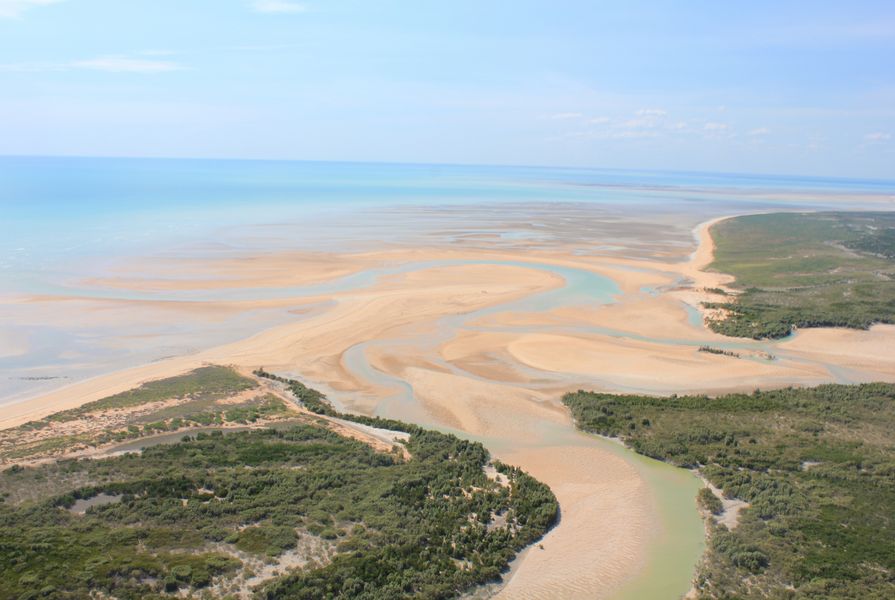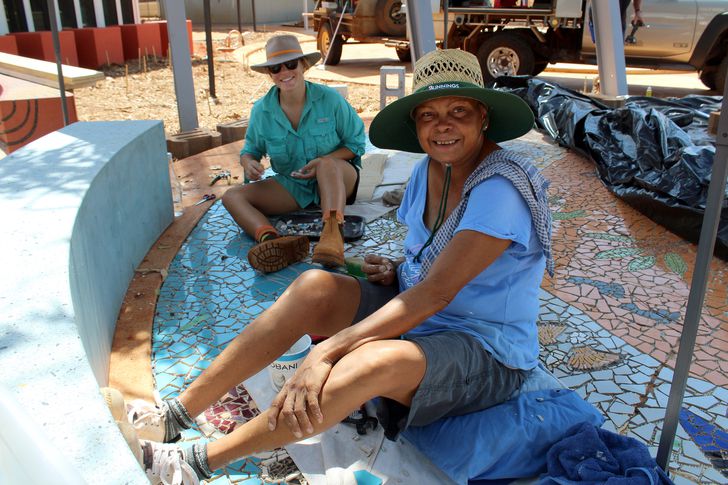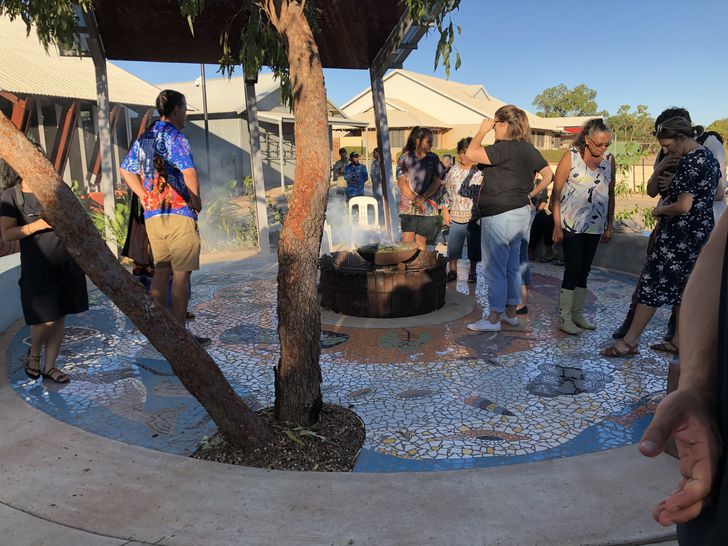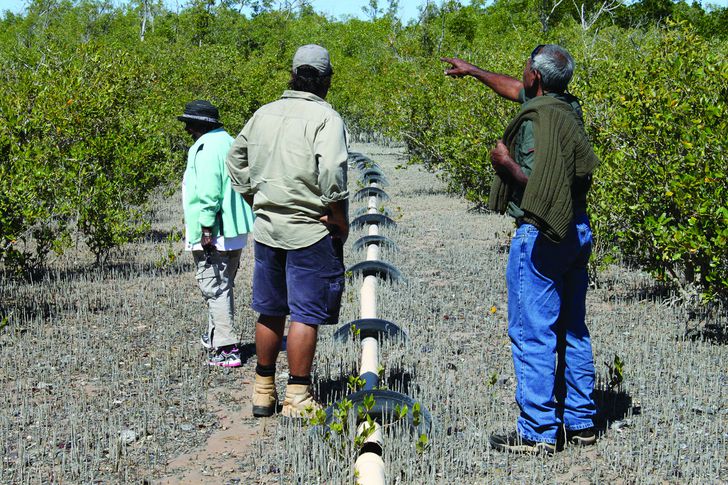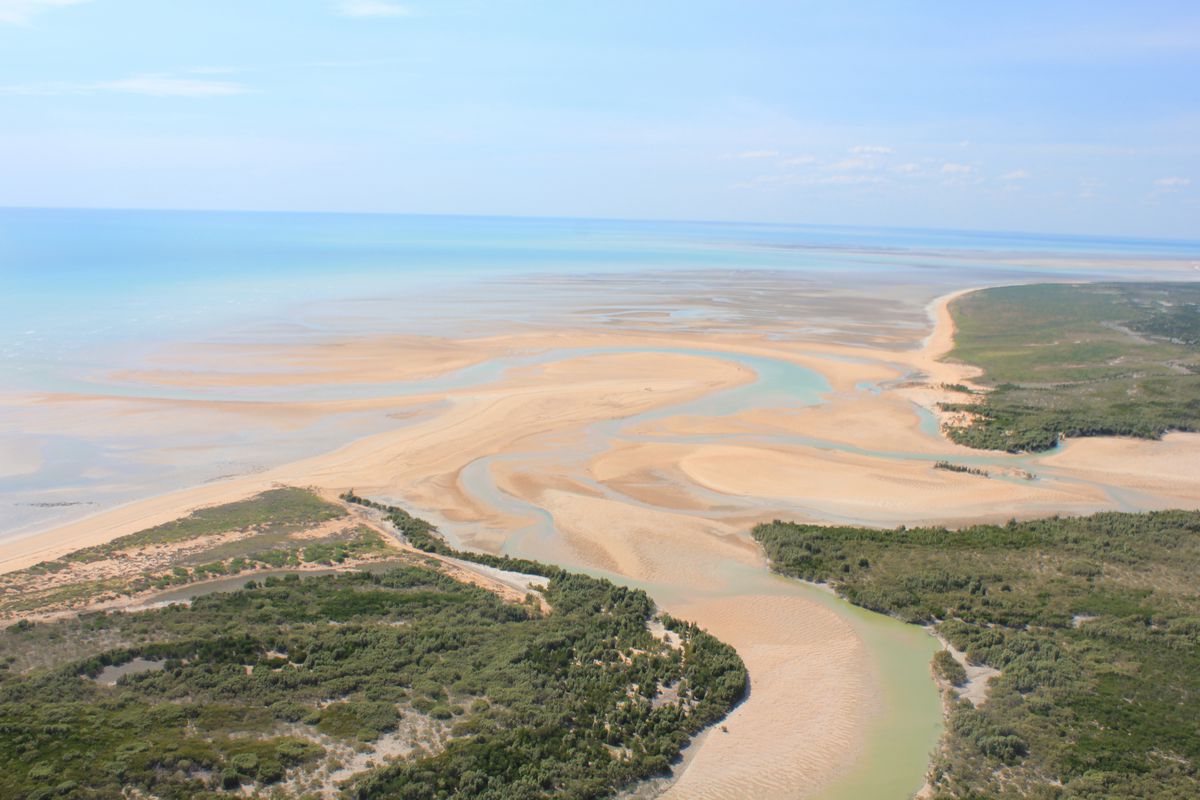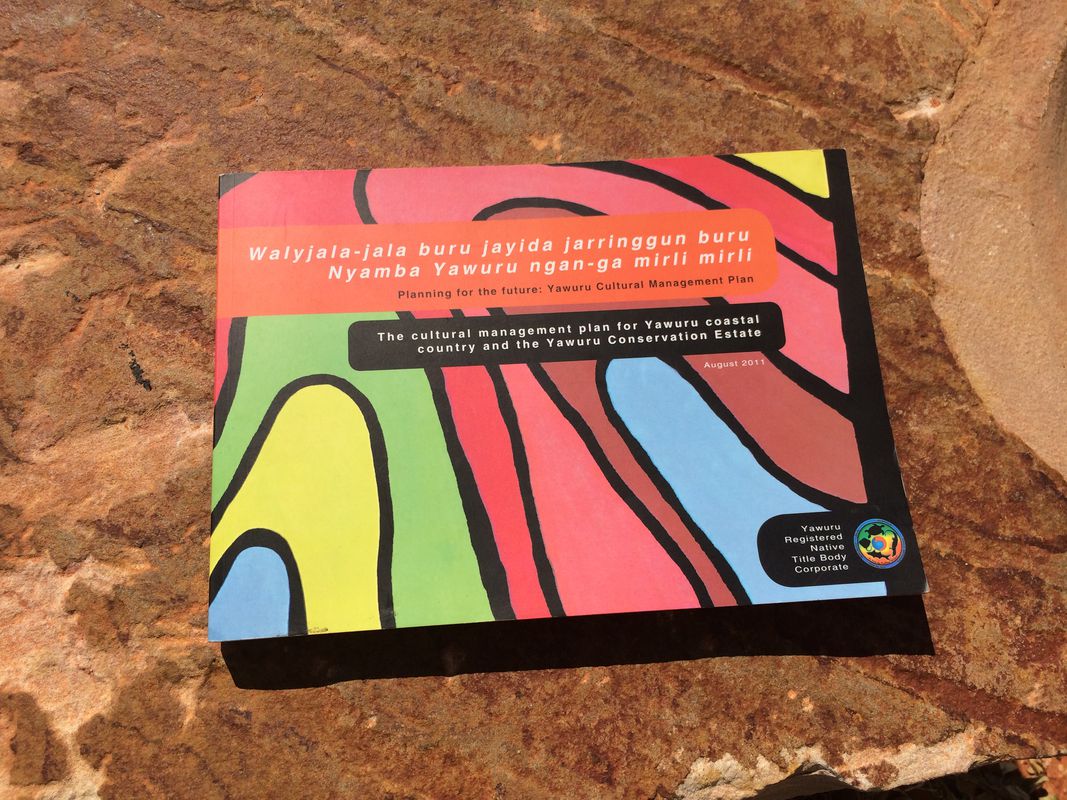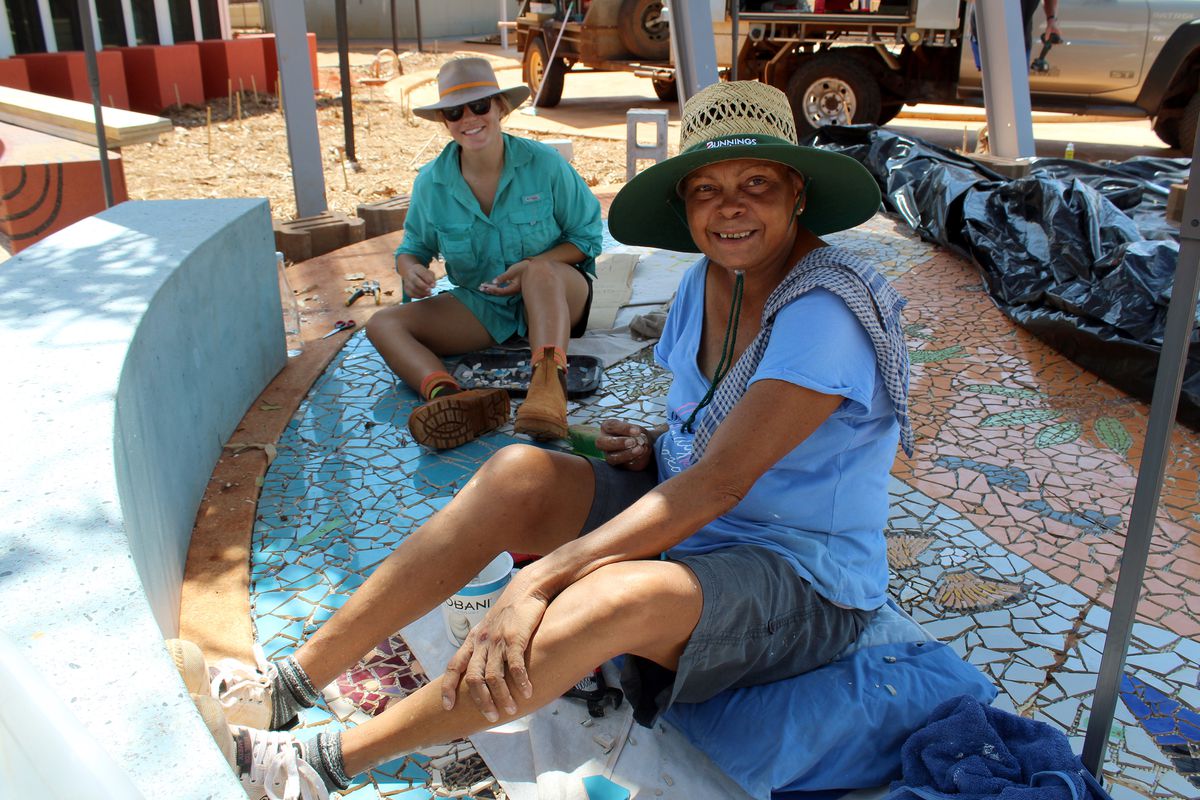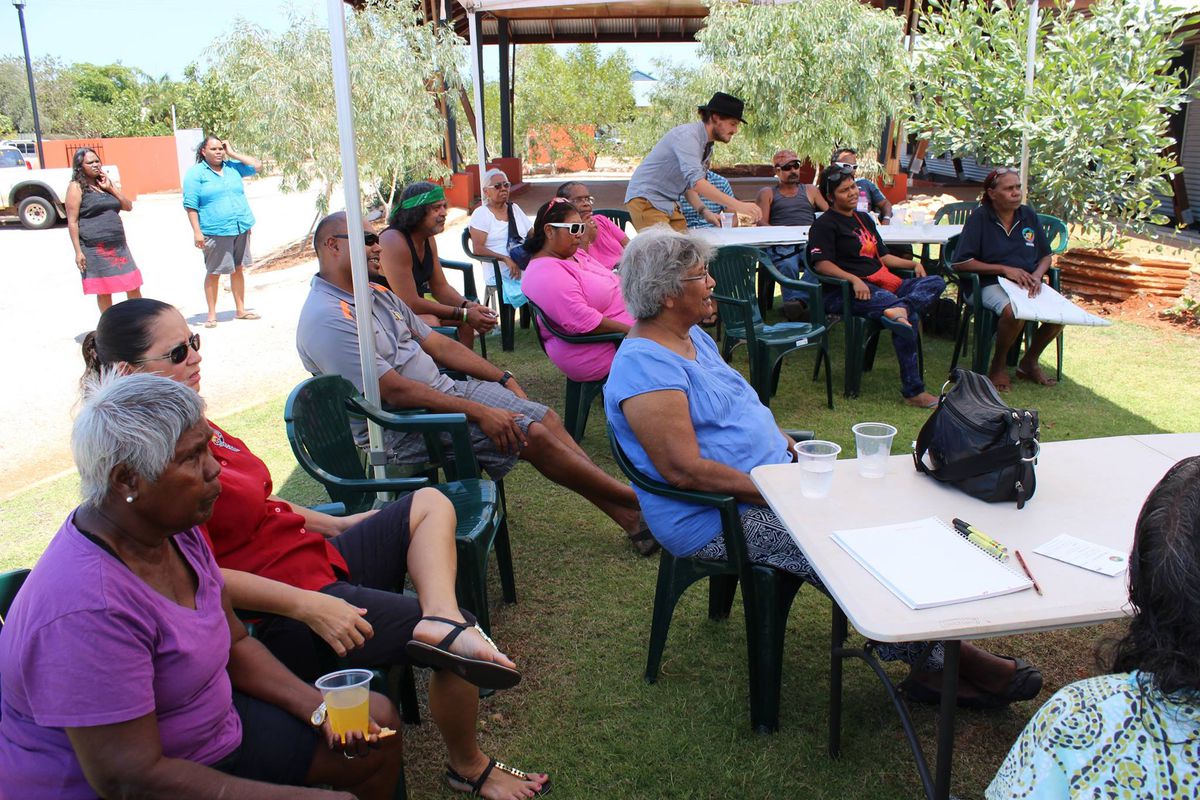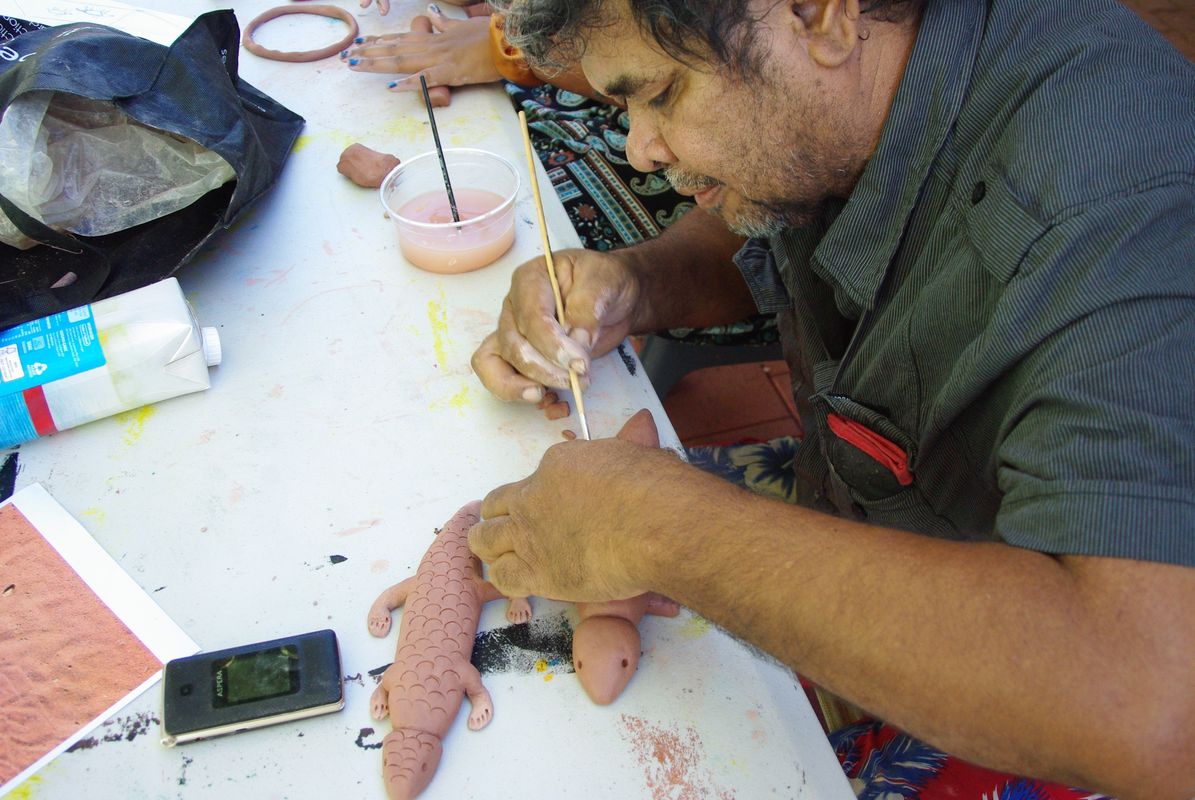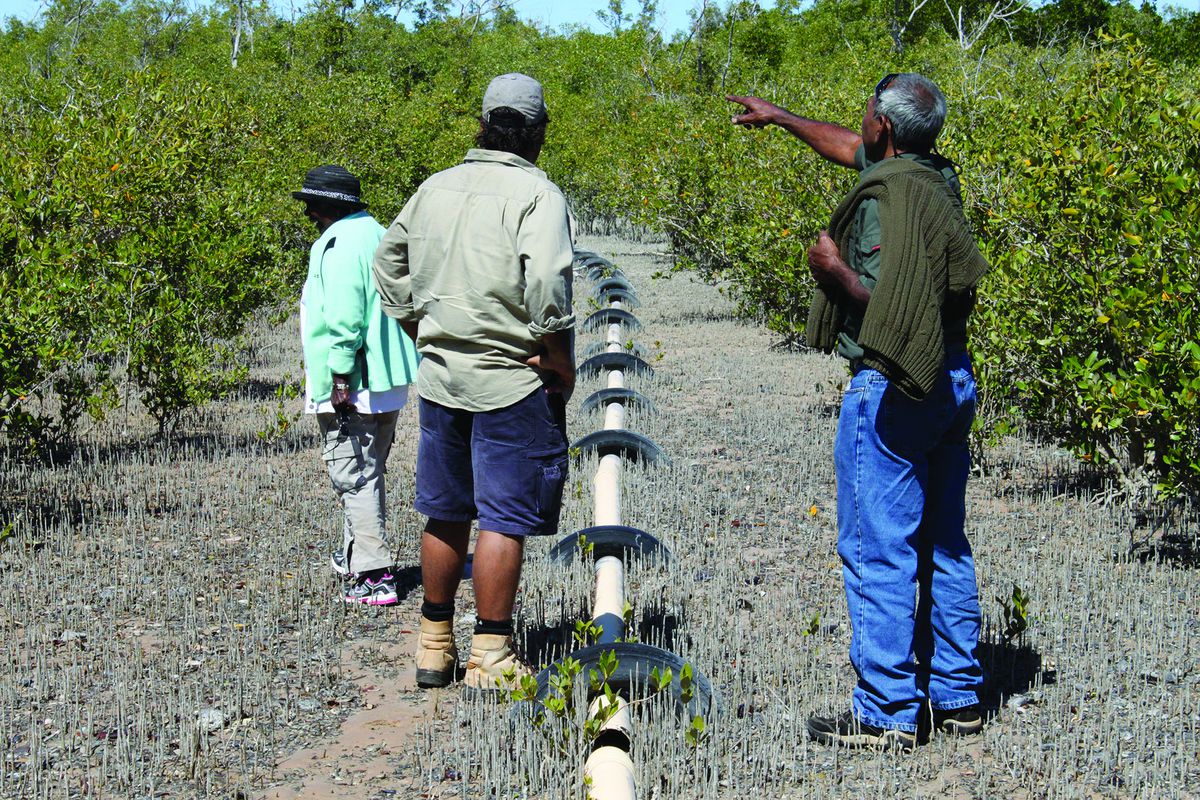Rosie Halsmith spoke with MudMap Studio’s Vanessa Margetts, and Naomi Appleby and Sarah Yu of Nyamba Buru Yawuru, about the present and future of the Yawuru Cultural Management Plan and its everyday role in the community. Based in Broome, Nyamba Buru Yawuru is a not-for-profit company owned by Yawuru native title holders that manages the tangible and non-tangible assets of the Yawuru community for the empowerment of Yawuru and other Aboriginal people within the region’s economy.
Rosie Halsmith: Naomi, Sarah and Vanessa, could you tell me a bit about yourselves?
Naomi Appleby: I am a Yawuru and Karajarri woman – Yawuru are the Traditional Owners of the Broome region. I work as a special project coordinator in the Mangara unit at Nyamba Buru Yawuru (NBY). Mangara means “always” or “forever.” In this unit, we focus on cultural heritage management, research and curatorial projects.
I have always been in the cultural heritage realm, working in the protection of culture and spending time with Yawuru people.
Sarah Yu: I also work in the Mangara unit at NBY – I work in cultural heritage. My background is in teaching and in anthropology, but my forte is in curation. I say I’m a curator because I’m not really telling my own story, I’m telling the story of the people that I’m working with.
With the support of friends like Vanessa Margetts and our amazing Yawuru artists and storytellers, and through partnerships with [landscape architecture organizations like UDLA and MudMap Studio], we have been able to produce really good work. With Vanessa, we’ve worked on projects like the Yawuru Cultural Management Plan, the Jetty to Jetty Trail, the Liyan-ngan Nyirrwa centre at NBY, and most recently, the Wanggajarli Burugun (We Are Coming Home) repatriation project to establish a memorial area at the Broome Cemetery for our stolen ancestors who have returned home. Our projects have been successful because of the community ethos that underpins them, and the respect for the Country and its story.
Vanessa Margetts: I have a background in visual arts and landscape architecture. I’ve been working on Yawuru Country for about 14 years – first as a student, then with UDLA, and now as director of MudMap Studio. Over that time I’ve worked on around 80 projects in the Broome area. The projects range in size and outcome, but I try to make sure that all the work I do is community-led.
RH: Sarah and Vanessa, you worked together with cultural advisors and community on the Yawuru Cultural Management Plan, a guiding document that aims to ensure Yawuru land, sea and intertidal areas are managed as one interconnected cultural system. Could you speak about the plan?
SY: The Cultural Management Plan was developed during 2010 and 2011. It came about as part of the Indigenous land-use agreement with native title holders – the Yawuru Native Title Holders Aboriginal Corporation RNTBC. It was agreed that there would be a conservation estate, but community said, “We won’t do a conservation estate until we have a Cultural Management Plan.” The first part of the plan is about who Yawuru are, and how they came to be recognized as the native title holders of Broome. It gives credit to Yawuru knowledge systems, it states the Yawuru vision and cultural values and includes a set of protocols for engagement. The last part is about management. For [this], we looked beyond the [land bounded by the conservation estate] – we looked at the whole of Yawuru Country.
The Yawuru Cultural Management Plan was prepared by Yawuru People to explain the importance of Yawuru country and culture, and outline the long-term cultural management for the country. Sarah Yu (Nyamba Buru Yawuru) and UDLA were commissioned by the Yawuru Registered Native Title Holders Body Corporate (RNTBC) to assist in facilitating the project.
Image: Vanessa Margetts
RH: Vanessa, what role do you think landscape architectural thinking, mapping and design communication played in the development of this document?
VM: I was involved with the development of the plan while at UDLA. Sarah and I talked from the beginning about the plan being a really accessible document. The idea is that anyone can pick it up and get a sense of Yawuru Country, people and values, without having to read every word. That’s one place where design communication was key, in helping to visually curate the information that came from community in the form of graphics, diagrams and maps.
Artists were involved right from the beginning. Very early on in the process, Yawuru artists Martha Lee and Maxine Charlie came up with the graphics, style and colour palette for the document. This is what creates that Yawuru feeling that’s strong throughout the document. I’ve tried to carry this aspect of the process on in a lot of my work in Broome.
RH: What impact has this culturally led strategic work had?
SY: The Cultural Management Plan defines cultural values as things that come from the relationship between people and Country, rather than as objects in Country. Working on Yawuru Country is about managing a relationship. Once this was communicated, it meant that external organizations had to engage the Elders in management – not just consult with them.
VM: The process for how to run future projects on Yawuru Country was informed by the plan. Whether projects are strategic or built, it’s the same process that’s used: being out on Country, collecting information, with community saying what they want.
SY: The plan brought people into the process in a really positive way. We paid people for their time. We were able to work with old people, young people. It was really quite powerful. Mapping and landscape were key to getting that connection between development ideas and people’s knowledge. It’s an intuitive way of creating a connection, because people understand the map – they know their Country. In many ways, the plan was an elaborate map-making project. Community learnt a lot from that. They gained confidence and realized that what they knew and understood was valuable.
RH: Naomi, how is the Cultural Management Plan used day-to-day at NBY?
NA: It’s a valuable document that runs out very quickly in the office. You have to fight for it! We use it to remind people that cultural values are what underpin our business and how we operate. We’re always bringing it back to the importance of what Yawuru are trying to achieve, which was set up by our Elders. The plan communicates what they wanted, and we’re trying to continue that journey.
RH: Naomi, Nyamba Buru Yawuru’s Liyan-ngan Nyirrwa (Cultural Wellbeing Centre) is a project that came out of the Cultural Management Plan and was completed in 2019. Could you speak about your experience of this project?
NA: Aunty Sarah [Sarah Yu] and Vanessa were very much part of the visioning, design and consultation for Liyan-ngan Nyirrwa. I’m on the other end of that, enjoying the benefits of what the centre [now] provides.
Terricita Corpos and Vanessa Margetts working on the mosaic at Liyan-ngan Nyirriwa.
Image: Nyamba Buru Yawuru
Liyan-ngan Nyirrwa hosts cultural activities that revive Yawuru material culture; foster traditional and contemporary song, dance and storytelling; cultivate respect for Elders; and offer training opportunities.
Image: Nyamba Buru Yawuru
RH: Could you speak to the concept of liyan and the role of this centre within the community?
NA: Liyan-ngan Nyirrwa translates to “a place of healing.” The mabu liyan philosophy is about good spiritual wellbeing. It’s a big part of Yawuru beliefs, to have good liyan. The centre was built around what we enjoy, as Yawuru people. We have a place for smoking – it promotes healing, to have that gunggarra (burning). We have our place for nurlu – our song and dance – and beautiful art pieces which tell the story of Yawuru cultural beliefs. It’s a place for community and visitors to come together. We hold our business at the centre – it’s a place for NBY’s social and cultural programs. It’s about coming together, enjoying each other’s company, enjoying good food and practising culture. The centre is like a physical representation of the Cultural Management Plan – it’s a place where you can walk within the landscape to appreciate and learn about Yawuru Country, people and values for yourself.
RH: What made this project successful?
VM: We were lucky that we had so much time and a really good budget. All in all, it was seven years of planning and making. The slowness was very important. Learnings from this project were that things take time, and that lots of people have to be involved. That’s just the way it is. Everything else needs to be worked out around involving the community at the heart of a project.
RH: Naomi, you have been appointed by the Yawuru Cultural Reference Group as a cultural ambassador for the Wanggajarli Burugun (We Are Coming Home) repatriation project. Could you share with us the significance of this project?
NA: We have just completed a visioning process for this project alongside MudMap Studio and Laird Tran Studio. The project is about creating a memorial and resting place for Yawuru, Karajarri, and possibly neighbouring ancestors who are returning from overseas museums. They haven’t been home for over a century – they were taken illegally during first contact and the early pearling days. It’s a big story that hasn’t been told in its entirety in the past, so we’re making sure we do that in the most appropriate way – in a way that promotes mabu liyan, healing and closure, for everyone. It’s a very, very spiritual and emotional process. The resting place and memorial will be located within the Broome Cemetery. At the resting place, our ancestors will rest in privacy – people will not be accessing this area. At the memorial, there will be more of an open space, where people can pay their respects in their own time.
The main point about the project is that it is community-led. It’s taken a lot of consultation. I am one of the appointed project ambassadors alongside my colleague Lloyd Pigram, a Yawuru Bardi man. Our role is to drive the community’s vision and facilitate a sensitive process that enables strong community ownership and healing on this important journey.
An afternoon spent investigating drains in Roebuck Bay during the development of the Yawuru Cultural Management Plan.
Image: Sarah Yu
RH: Vanessa, as a consultant on this project, could you speak to the role and importance of Naomi’s role and, more generally, the concept of cultural guidance?
VM: Both Naomi and Lloyd have been amazing in how they have been leading the project. They’ve helped guide Laird Tran Studio, other consultants and myself. This has allowed us to feel [culturally] safe even though we’re navigating difficult territory. Telling this story though landscape and art, through mediums that are accessible, goes back to the process developed for the Cultural Management Plan. The idea is that people can develop an understanding of Yawuru Country by being on Yawuru Country.
RH: Each of the projects has come about through collaboration between consultants, cultural advisors and community members. How did this collaboration impact the project process and outcomes?
NA: It’s about getting the process right, more than the product. It’s that continual engagement that leads to successful outcomes.
SY: We know what the story is, and we know how to tell it. When the story needs a bit of crafting, that’s where the skills of landscape architects and other consultants come in. You’ve got to get the underneath stuff happening and then the rest just flows.
VM: As consultants, it’s important to remember that it’s not really about us. We’re just facilitating a process.
SY: Giving people ownership of the project is very important, and you can only do that if people are involved. [This process] re-affirms people’s identities, putting their stories into the landscape. At NBY, all of our projects are landscape projects, one way or the other. They’re all on Country, somewhere. And the people who know the Country are the people that you need to talk to.
Source
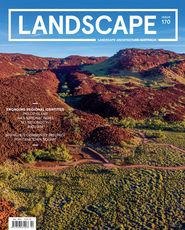
Practice
Published online: 1 Jul 2021
Words:
Rosie Halsmith
Images:
Nyamba Buru Yawuru,
Sarah Yu,
Vanessa Margetts
Issue
Landscape Architecture Australia, May 2021

